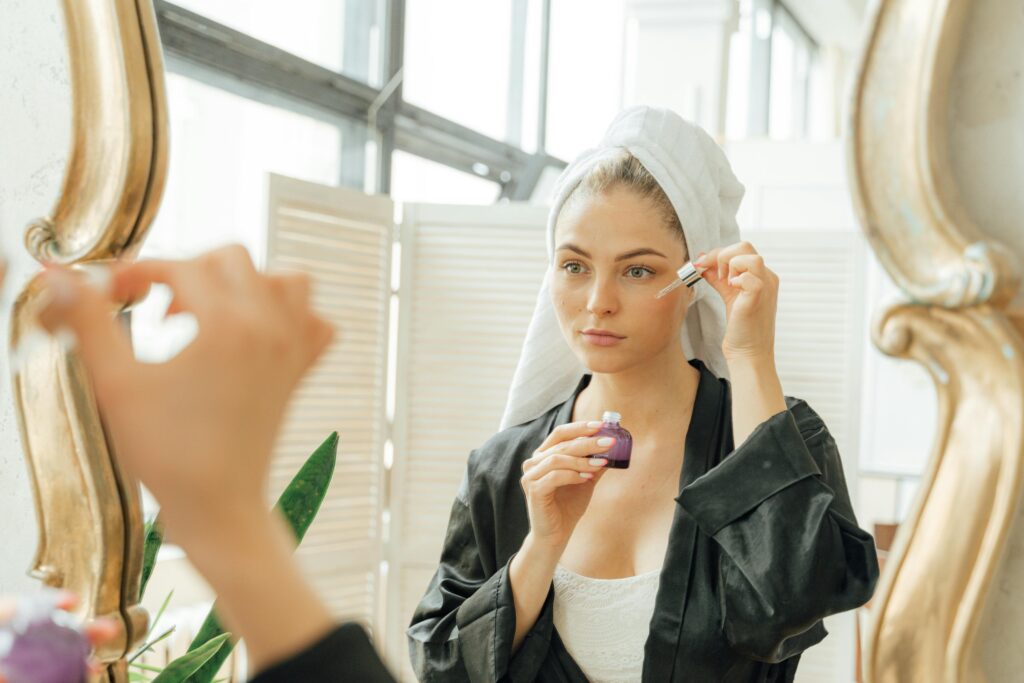The Transformative Power of Thermal Baths: Enhancing Relaxation with Light and Sound.
Introduction: Setting the Scene
Steam rises gently from the surface of mineral-rich waters, dancing in beams of cobalt blue light that shift gradually to violet. The soft, resonant tones of singing bowls echo through the space, their vibrations seeming to ripple across the water’s surface. The air is heavy with the scent of eucalyptus and lavender, while the warm embrace of the thermal waters melts away tension held deep in your muscles.
This is not merely a bath—it’s a full sensory journey, a therapeutic ritual that humans have been perfecting for thousands of years. But today’s thermal bath experiences have evolved beyond their ancient origins, incorporating cutting-edge light technology and carefully curated soundscapes that transport bathers to new realms of relaxation.
Whether you’re planning your first visit to a thermal spa or looking to enhance your home bathing routine, understanding the powerful interplay between thermal waters, light, and sound can revolutionize your approach to self-care and wellness. Let’s dive deep into this immersive

The Magic of Thermal Baths: Ancient Origins of Thermal Bathing
The practice of bathing in thermal waters dates back to prehistoric times, with evidence suggesting that early humans gathered around natural hot springs not just for cleanliness, but for their perceived healing properties. By 2000 BCE, the Minoan civilization had developed elaborate bathing chambers, while ancient Egyptians bathed in mineral-infused waters as part of medical treatments.
However, it was the Romans who truly elevated thermal bathing to an art form. Their elaborate bath complexes (thermae) served as social hubs where citizens of all classes could enjoy graduated pools of varying temperatures, massage rooms, exercise spaces, and libraries. The ruins of facilities like the Baths of Caracalla in Rome and the Roman Baths in Bath, England stand as testament to the cultural significance these spaces held.
The Science Behind Thermal Waters

What makes thermal waters so special isn’t merely their warmth. Natural thermal springs contain a rich mineral composition that varies by location:
- Sulfur-rich waters: Known for treating skin conditions and respiratory issues
- Bicarbonate waters: Help improve circulation and cardiovascular health
- Iron-rich waters: Can help with anemia and boost the immune system
- Magnesium-rich waters: Relieve muscle tension and stress
The hydrostatic pressure of being immersed in water also reduces joint compression and swelling while improving circulation. Meanwhile, the heat dilates blood vessels, decreases blood pressure, and increases blood flow to damaged tissues, accelerating healing processes.
Global Bathing Traditions
Across continents, various cultures have developed distinct bathing traditions:
- Japanese onsen: Natural hot spring baths often located in breathtaking natural settings
- Turkish hammams: Steam baths focused on cleansing rituals and massage
- Russian banyas: Hot steam rooms followed by cold plunges
- Finnish saunas: Dry heat experiences often concluded with lake swimming
- Icelandic hot pots: Geothermal pools that serve as community gathering places
What unites these diverse traditions is their recognition of water’s ability to heal, restore, and transform—physically, mentally, and spiritually.
The Symphony of Light and Sound
The Psychology of Color in Water Environments
Light dramatically transforms our perception of water. Blue light creates a sense of depth and tranquility, while purple evokes spirituality and introspection. Warm tones like amber and rose can stimulate circulation and create a sense of coziness.
Modern thermal spas utilize chromotherapy—the therapeutic application of colored light—to enhance specific wellness goals:

- Blue: Calms the nervous system and reduces inflammation
- Green: Balances emotions and relieves stress
- Red: Stimulates circulation and energy
- Yellow: Improves digestion and mental clarity
- Purple: Enhances meditation and spiritual awareness
When synchronized with the bathing experience, these colors can guide the bather through different emotional and physiological states.
Sound as a Healing Modality

Water amplifies and carries sound waves differently than air, creating an immersive acoustic environment. Many thermal bath facilities incorporate:
- Underwater speakers: Allowing bathers to feel sound vibrations through their entire body
- Nature sounds: Rainfall, ocean waves, or forest ambience that trigger the parasympathetic nervous system
- Binaural beats: Sound frequencies that synchronize brainwaves to promote deep relaxation
- Classical or ambient compositions: Music specifically composed to induce relaxation states
- Singing bowls and gongs: Instruments that produce resonant frequencies believed to harmonize the body’s energy centers
The combination of thermal waters and specific sound frequencies can create a state of “acoustic flotation” where the boundary between body and water seems to dissolve, allowing for profound states of relaxation.
Sound as a Healing Modality
Water amplifies and carries sound waves differently than air, creating an immersive acoustic environment. Many thermal bath facilities incorporate:
- Underwater speakers: Allowing bathers to feel sound vibrations through their entire body
- Nature sounds: Rainfall, ocean waves, or forest ambience that trigger the parasympathetic nervous system
- Binaural beats: Sound frequencies that synchronize brainwaves to promote deep relaxation
- Classical or ambient compositions: Music specifically composed to induce relaxation states
- Singing bowls and gongs: Instruments that produce resonant frequencies believed to harmonize the body’s energy centers
The combination of thermal waters and specific sound frequencies can create a state of “acoustic flotation” where the boundary between body and water seems to dissolve, allowing for profound states of relaxation.
A Journey Through the Senses
Picture yourself entering a contemporary thermal bath facility. The transition from the outside world begins immediately. Subdued lighting guides you through the changing area, where the air already carries hints of essential oils. As you move closer to the main bath area, you hear the gentle sound of flowing water, perhaps underscored by the faint chimes of singing bowls.
The Immersion: Surrendering to Sensation
As you slowly enter the main thermal pool, indigo lighting casts the water in deep blue hues. The water temperature—a perfect 104°F (40°C)—envelops your body like a warm embrace. You notice how the lighting shifts gradually, transitioning from deep blue to a lighter aquamarine.

Underwater speakers pulse with low-frequency tones that you feel as much as hear. These sounds synchronize with your breathing, naturally guiding you to slow and deepen each inhalation and exhalation.
The Float: Dissolving Boundaries
Moving to the flotation section of the bath, you lie back, supported perfectly by the mineral-dense water. Overhead, a constellation of tiny lights mimics the night sky, while the music shifts to incorporate the sounds of gentle rainfall and distant thunder.
The combination of full-body support from the water, the hypnotic visual elements, and the immersive soundscape creates a unique state of consciousness—alert yet deeply relaxed, present yet dreamlike.
The Contrast: Awakening the Body
Next comes the contrast therapy section. You move between hot and cold pools, each with its own distinct lighting and soundscape. The hot pool glows with amber light and resonates with warm, rich tones, while the cold plunge bath is illuminated with invigorating white-blue light and crisp, clear sounds.
This alternation between temperatures doesn’t just invigorate the body—it creates a heightened awareness of sensation that grounds you firmly in the present moment.
The Return: Integration and Reflection
The journey concludes in a relaxation area where soft purple lighting creates a meditative atmosphere. The soundscape here is minimal—perhaps just the occasional resonant tone of a single singing bowl. This space allows you to integrate the experience, noticing how your body feels lighter, your mind clearer, and your nervous system recalibrated.
Scientific Foundations of Sensory Relaxation

Neurological Effects of Combined Sensory Therapy
The Body's Response to Multisensory Input
Research reveals fascinating insights about how our brains process simultaneous sensory inputs:
- Cross-modal perception: When sight, sound, and touch inputs are harmonized, the brain processes them as an integrated experience rather than separate stimuli
- Default Mode Network: Immersive sensory experiences can quiet the brain’s DMN, responsible for self-referential thinking and rumination
- Increased alpha wave activity: Combined light and sound therapy has been shown to increase alpha brainwave production, associated with relaxed alertness
- Stress hormone reduction: Studies show that immersive sensory experiences can reduce cortisol levels more effectively than single-mode relaxation techniques
. Beyond the brain, the body responds to synchronized sensory input in measurable ways:
- Autonomic nervous system regulation: Shifts from sympathetic (fight-or-flight) to parasympathetic (rest-and-digest) dominance
- Heart rate variability: Improvement in HRV, a key marker of stress resilience and overall health
- Muscle tension reduction: Measured decreases in electromyographic (EMG) activity, indicating deeper muscular relaxation
- Improved immune markers: Preliminary research suggests enhanced immune function following multisensory relaxation sessions. These physiological changes explain why the effects of a well-designed thermal bath experience can last for days after the actual immersion.
Creating Your Own Thermal Bath Experience - DIY

Home Setup Essentials
While recreating a full spa experience at home has limitations, you can create a remarkably effective sensory bath with these elements:
- Bath additives: Epsom salts, mineral blends, and essential oils that mimic thermal water properties
- Lighting options: Waterproof LED lights, color-changing bulbs, or even simple candles strategically placed
- Sound equipment: Waterproof Bluetooth speakers, smartphone with specialized relaxation apps, or simply a speaker placed safely away from water
- Temperature control: Thermometer to maintain optimal water temperature (between 100-104°F for therapeutic effects)
- Comfort accessories: Neck pillows, floating trays for essential items, and plush towels for after
Crafting a Multisensory Ritual

The effectiveness of home thermal baths increases when approached as a ritual rather than simply a bath:
- Preparation phase: Clear the bathroom of clutter, set up lighting and sound, prepare towels and post-bath comforts
- Transition phase: Brief meditation or breathing exercise before entering the bath
- Immersion sequence: Begin with neutral lighting, gradually shifting to colors that match your wellness needs
- Sound progression: Start with nature sounds, transition to binaural beats or instrumental music, end with silence
- Post-bath integration: Wrap in warm towels, continue the relaxation in a comfortable space, possibly journaling about the experience
Specialized Equipment for Enthusiasts
For those willing to invest more significantly:
- Chromotherapy systems: Professional-grade lighting systems designed specifically for bathrooms
- Vibroacoustic technology: Devices that transmit sound vibrations directly through water
- Essential oil diffusers: Ultrasonic diffusers that add aromatherapeutic elements to the experience
- Smart home integration: Systems that allow programming of synchronized light, sound, and temperature sequences
- High-mineral bath additives: Professional-grade products that more closely mimic specific thermal springs worldwide
The Future of Sensory Wellness
Emerging Technologies in Spa Design
The wellness industry continues to innovate in the realm of sensory bathing experiences:
- Virtual reality integration: Immersive visual environments synchronized with the physical bathing experience
- Personalized biometric feedback: Systems that adjust light, sound, and water parameters based on real-time measurements of the bather’s vital signs
- Artificial intelligence curation: AI systems that learn user preferences and create customized sensory journeys
- Acoustic water sculpting: Technology that shapes water into patterns and forms using sound vibrations
- Advanced chromotherapy: Lighting that changes not just color but intensity and pattern based on therapeutic algorithms.
Sustainable Approaches to Thermal Wellness
The future also holds promise for more environmentally conscious thermal experiences:
- Energy-efficient heating systems: Solar-powered and heat-exchange systems that maintain thermal waters with minimal environmental impact
- Water conservation technology: Advanced filtration and recirculation systems that reduce water waste
- Biomimetic design: Facilities that draw inspiration from natural hot spring environments
- Community-based wellness models: Shared thermal facilities that reduce resource use while enhancing social connection
- Integration with natural settings: Thermal experiences designed to complement rather than replace natural environments
Conclusion
The marriage of thermal waters with thoughtfully designed light and sound elements creates something greater than the sum of its parts—a therapeutic experience that addresses the whole person: body, mind, and spirit. By engaging multiple senses simultaneously, these immersive baths create a unique pathway to deep relaxation that is difficult to achieve through other wellness practices.
Whether experienced in a world-class spa facility or created with care in your own bathroom, the synchronized elements of warm water, therapeutic light, and harmonious sound offer a sanctuary from the sensory chaos of modern life. In an age of constant digital stimulation and cognitive overload, the thermal bath stands as a testament to the healing power of sensory harmony—a space where ancient wisdom and modern science converge to restore our innate balance.
As you explore this transformative practice, remember that the most profound benefits come not from the most expensive facilities or equipment, but from the quality of attention and presence you bring to the experience. The waters, lights, and sounds create the container—but it is your conscious participation that completes the alchemy.
.
FAQ - Frequently Asked Questions About Thermal Bath
1.How long should I stay in a thermal bath for optimal benefits?
Most experts recommend 15-30 minutes for thermal immersion. Listen to your body—lightheadedness, excessive sweating, or discomfort are signs to exit the water. For therapeutic effects, consistency (regular sessions) matters more than duration. Always stay hydrated by drinking water before, during, and after your bath.
2. Can light and sound therapy in thermal baths help with specific health conditions?
While sensory thermal baths shouldn’t replace medical treatment, research indicates potential benefits for conditions including chronic pain, anxiety disorders, insomnia, and certain skin conditions. Blue light immersion shows promise for psoriasis treatment, while specific sound frequencies may help reduce pain perception. Always consult healthcare providers before using thermal therapies for medical conditions.
3.What’s the difference between a regular bath with music and a true sensory thermal bath experience?
Authentic sensory thermal experiences differ in several key ways: mineral content (natural thermal waters or high-quality mineral additives), precise temperature control, professionally sequenced light progressions (not just static colored lights), and specialized audio that works with rather than against the acoustic properties of water. The integration of these elements creates neurological effects not achievable with simple additions to a regular bath.
4.Are there any people who should avoid thermal bath experiences with light and sound?
Certain individuals should exercise caution: pregnant women, people with cardiovascular conditions, those with epilepsy or light sensitivity, individuals with certain skin conditions, and people taking medications affected by heat. If you have any medical condition, consult your healthcare provider before trying intensive sensory thermal experiences, particularly those involving temperature extremes or bright, pulsating lights.
5.How do I choose between different types of thermal bath facilities?
Consider these factors when selecting a facility: water source and mineral composition (look for facilities that specify their water’s mineral content), light and sound technology (ask about their specific approach to sensory integration), temperature options (facilities offering various temperature zones provide more therapeutic range), cleanliness and water treatment methods, and available complementary services like massage or contrast therapy.
